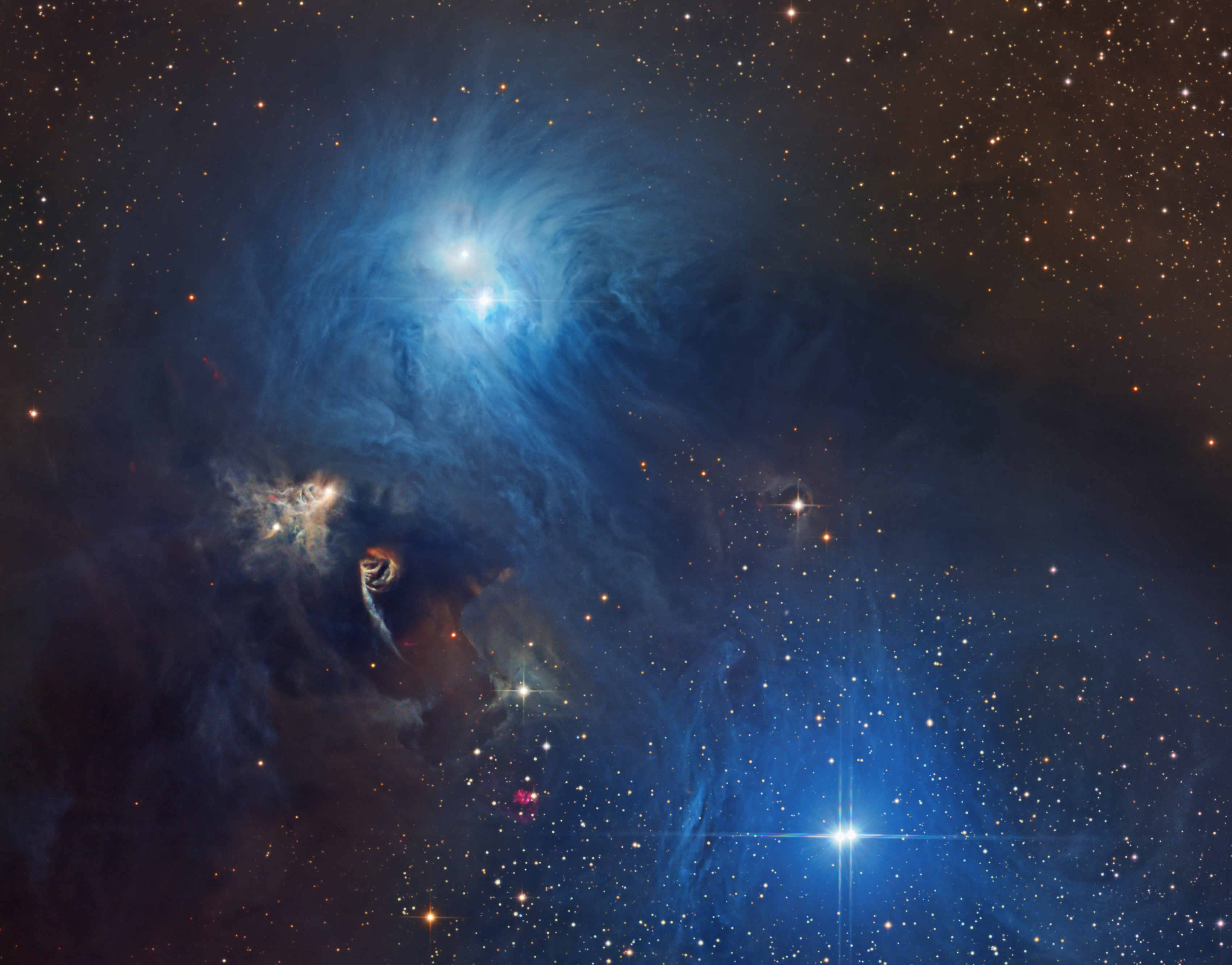
Copyright:CHART32 Team
中文翻譯:
在這幅望遠鏡的壯麗景觀中,宇宙塵雲和年輕而充滿活力的恆星織成一道美麗的圖畫,距離地球不到500光年,位於南天星座「冠座」的北部邊界。這些塵雲有效地阻擋了來自遙遠背景恆星的光芒。然而,這個複雜的反射星雲群,包括NGC 6726、NGC 6727和IC 4812,所產生的特有藍色是因為該區域年輕熱恆星的光被宇宙塵埃反射所致。這些塵埃還遮蔽了尚在形成過程中的恆星。
在左側,更小的黃ish星雲NGC 6729環繞著變星R Coronae Australis。它的下方,閃爍的弧形和環形結構是由於嵌入式新生恆星所造成的驟然噴射而被衝擊出的Herbig-Haro物體。這一片景象在天空中的視野範圍約為1度,對應於在這個附近恆星形成區的估計距離,大約相當於9光年。
#宇宙塵雲 #年輕恆星 #冠座 #反射星雲 #NGC6726 #NGC6727 #IC4812 #RCoronaeAustralis #HerbigHaro #星際之美 #天文奇觀 #宇宙探索
原文:
Cosmic dust clouds and young, energetic stars inhabit this telescopic vista, less than 500 light-years away toward the northern boundary of Corona Australis, the Southern Crown. The dust clouds effectively block light from more distant background stars in the Milky Way. But the striking complex of reflection nebulae cataloged as NGC 6726, 6727, and IC 4812 produce a characteristic blue color as light from the region’s young hot stars is reflected by the cosmic dust. The dust also obscures from view stars still in the process of formation. At the left, smaller yellowish nebula NGC 6729 bends around young variable star R Coronae Australis. Just below it, glowing arcs and loops shocked by outflows from embedded newborn stars are identified as Herbig-Haro objects. On the sky this field of view spans about 1 degree. That corresponds to almost 9 light-years at the estimated distance of the nearby star forming region. APOD Talk: Friday, January 9 in New York City
來源:NASA每日圖片


